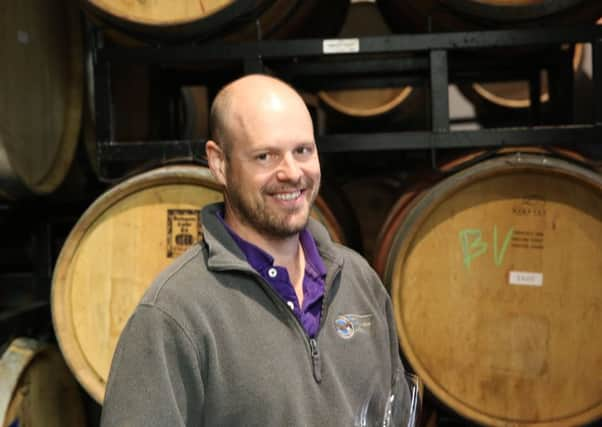How a winery on a Seattle industrial estate is making a name for itself


One of the most bizarre places where I have seen a whole cluster of wineries is at an industrial estate on the outskirts of Seattle. Cheek by jowl with each other, there are at least 50 wineries, squashed into a space that might normally house a furniture warehouse. Each has its own little tasting room at the front, and through a door there is a bijou winery. With stainless steel tanks in a corner, barrels down the middle and if you are lucky, enough space to be able to move around the equipment, this is winemaking on a small, but serious scale. Out the back there is a yard with facilities to hose down barrels and bring in a mobile bottling line.
And the vineyards? Well they are around four hours drive away, over the mountains in an area known as the Columbia Valley.
Advertisement
Hide AdAdvertisement
Hide AdIn an industry where many producers pride themselves on being able to get from vineyard to winery in the shortest possible time, why is there such a huge distance between vineyard and these wineries in Washington State? The answer was succinctly given by Javier Alfonso who is the owner, winemaker and chief barrel filler at Pomum Cellars in one of the industrial units close to Seattle. “We have a market of three million people in Seattle and it is a nice place to live, while over the mountains it is essentially desert.”
The Cascade Mountains form a forest-covered barrier between coastal Seattle and Eastern Washington. As you drive over the mountains the landscape changes to dusty, windblown sagebrush and rainfall is so low it is almost non-existent in some parts. Vineyards survive only because of the network of irrigation pipes that run from the vast Columbia River and its tributaries.
Summer temperatures are high, sunlight hours are longer than California and winter temperatures are low. All this makes Eastern Washington “the best place on earth to grow vinifera vines,” says Javier. The naturally dry summer weather means that spraying is kept to a minimum.
But there is a downside to the distance. Weekends are non-existent for these small-scale winemakers. They are in their trucks, heading east over the mountains, checking on their crops, which are grown by contract farmers who seem happy to produce grapes to specification and sell it to enthusiastic winemakers.
Advertisement
Hide AdAdvertisement
Hide AdSecond jobs keep many of these wineries afloat. Jeff at WT Vintners is a sommelier; Kit Singh of Lauren Ashton is a dentist; Javier at Pomum has left his day job as an aeronautical engineer on the space programme to concentrate on his wines. Multiply these enthusiasts by 50, 100 or maybe 500 and you have an idea of the local, vibrant, high-quality, garage-wine culture.
With Seattle on the doorstep, knee-deep in wealthy Microsoft employees, wine is in fashion and is certainly not cheap. If you travel to west coast Washington State look out for wines from these producers, but also from Mike Savage who is breaking away from traditional varieties to investigate Grüner Veltliner and Cabernet Franc. Hestia is another brand that impressed me, made by Shannon Jones who is also producing varieties such as Tempranillo and Malbec.
This small-scale industry is in contrast to the major producer in Washington State, Ch. Ste. Michelle. Founded just after the repeal of Prohibition and built on the estate of a Seattle lumber baron Frederick Stimson, Ch. Ste Michelle is the industrial giant that has spawned this west coast wine culture. With a grand visitor centre, huge gardens and summer concerts, it acts as a magnet for anyone interested in wine, and while they are visiting they can pop into the nearby garage producers too.
Ch. Ste Michelle produces two million cases of wine each year, and while prices are distinctly more affordable than the garage producers, the quality is high. It owns 3,500 acres of land on the eastern side of the Cascades and can select location and site to suit each variety. Vineyards are scattered across places with evocative names such as Horse Heaven Hills, Rattlesnake Hills and Red Mountain.
Advertisement
Hide AdAdvertisement
Hide AdSurprisingly Ch. Ste. Michelle is the largest single producer of Riesling in the world, and so it has teamed up with Germany’s Ernst Loosen to make Eroica, a stylish, rounded, floral-edged Riesling (around £20, Noel Young Wines, mail order). It also makes a joint venture Cabernet blend wine with Antinori, Col Solare (Hic! Wines, Ledston, £50). You can also find the light, fresh-tasting sparkling Ch. Ste. Michelle at Hic!, £14.95.
Between the huge Ch. Ste. Michelle and the tiny garage producers there are some mid-sized producers who manage to create their own style of wines in sufficient volume to export. Hedges Family Estate takes grapes from 110 acres on Red Mountain, where the vines are farmed bio-dynamically. “We wanted to make sure that our grapes came from sustainable vineyards,” said Tom Hedges. The results are good. There is depth and concentration in the reds, with a silkiness in the tannins of his Cabernet. Try Hedges Cabernet Sauvignon 2014, available from Marks & Spencer by mail order (£13), but it would be good to see the whites available too. His Marsanne Viognier 2014 is outstanding, but still only available stateside.
Charles Smith is another style of wine phenomenon, now relocated from Walla Walla in the heart of the growing country, to Seattle where his trendy tasting room and state-of-the-art winery is packed out with weekend visitors. Try his Kung Fu Girl Riesling 2015 with Asian cuisine (Bowland Vintners, £13.95) and expect to see more of his distinctive labels appear on our shelves soon.